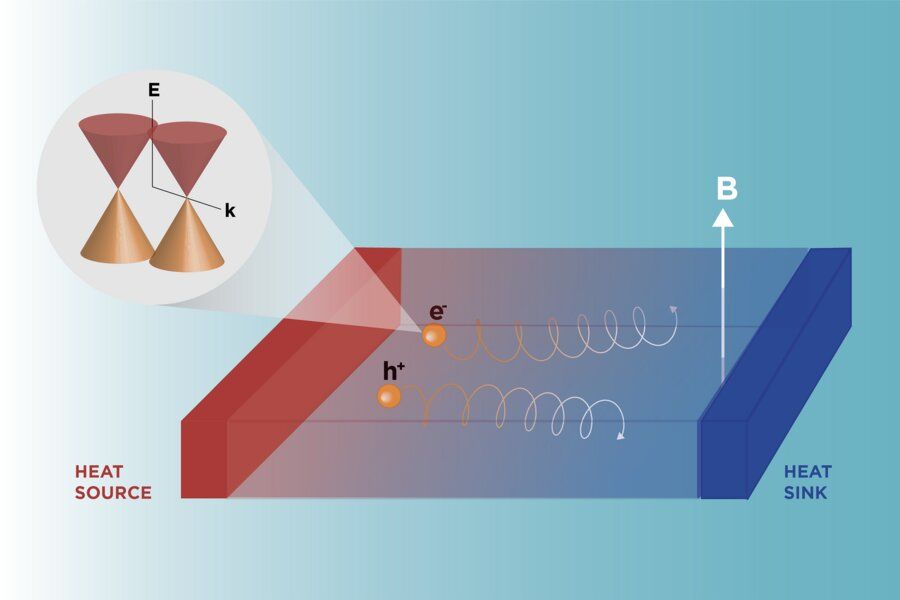More than two-thirds of the energy used worldwide is ultimately ejected as “waste heat.” Within that reservoir of discarded energy lies a great and largely untapped opportunity, claim scientists in MIT’s Department of Nuclear Science and Engineering (NSE). As reported in a recent issue of Nature Communications, the MIT team—led by Assistant Professor Mingda Li, who heads NSE’s Quantum Matter Group—has achieved a breakthrough in thermoelectric generation, which offers a direct means of converting thermal energy, including waste heat, into electricity.
A temperature gradient, or difference, within a material such as a metal or semiconductor can, through a phenomenon known as the Seebeck effect, give rise to an electrical voltage that drives a current. “For many materials, the thermoelectric effect is too low to be useful,” explains NSE Research Scientist Fei Han. “Our goal is to find materials with conversion efficiencies high enough to make thermoelectric generation more practical.”
The efficiency of thermoelectric energy conversion is proportional to a material’s temperature, electrical conductivity, and something called the “thermopower” squared; it is inversely proportional to the thermal conductivity. Because efficiency goes up with temperature, most thermoelectric materials used today operate in the range of hundreds of degrees centigrade. “But in our lives, most of the stuff around us is at room temperature,” Han says. “That’s why we’re trying to discover new materials that work effectively at or below room temperature.”
